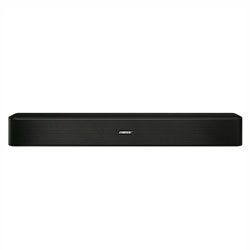 The low-profile design of the panel corresponds to the Sonos corporate identity; it is successfully designed in such a way that it can look relatively flat both when mounted on a wall and when installed under a TV. The Playbar is also one of the few sound panels that convincingly simulate surround sound - it creates the feeling that the room, as if, really has separate speakers. Let’s see all the Sonos Playbar specs in our Sonos Playbar review.
The low-profile design of the panel corresponds to the Sonos corporate identity; it is successfully designed in such a way that it can look relatively flat both when mounted on a wall and when installed under a TV. The Playbar is also one of the few sound panels that convincingly simulate surround sound - it creates the feeling that the room, as if, really has separate speakers. Let’s see all the Sonos Playbar specs in our Sonos Playbar review.
Sonos Playbar review
Features
The Playbar is also one of the few sound panels that convincingly simulate surround sound - it creates the feeling that the room, as if, really has separate speakers. Its output power is 200W. There are 3.0 built-in channels.
It is possible to wirelessly connect the Playbar with Sonos Sub and a pair of Play: 3 speakers to create a true 5.1 home system.
Design and build
The Playbar stands out with a rather low profile (8.4 cm) and therefore does not obscure the remote control sensor on the TV panel. But even if you have a TV with an unusually low sensor, the Playbar duplicates the remote control signals through the sensor on the back of the Playbar.
An internal sensor detects the position of the panel and automatically adjusts its performance (less wall-mounted bass is required for wall mounting).

Connectivity
The rear panel has a minimum of connections: one optical audio input, a power connector and a pair of Ethernet connectors.
Only one audio input is intentional; this is not an omission. As with many other soundbars, the Playbar's sound sources are connected directly to the TV, after which the optical audio output of the TV will be connected directly to the panel.
Setup
Installation, for the most part, is very simple - step-by-step instructions are required through the Controller Sonos application. There is only one step that will require some technical knowledge - setting up your MacBook to access your digital music library. You will have to go through several system configuration steps to ensure client-server interaction for local area networks.
Pros and Cons
Pros
- I paired it with a Sonos subwoofer which I highly recommend and now there are nights where I never turn the TV on
- After a no brainer install, I downloaded the Sonos app, which is intuitive, holds all my Amazon Music, Spotify, Apple Music songs, etc. which are easily accessed
Cons
- Spoken dialogue is too quiet while action scenes are window-shaking loud
Common features
Product
Model
Brand
Reviews
General
Placement type
Connection to source
Soundbar buttons
Audio features
Built-in channels
Amplification type
Output power, W
Separate speaker (in package)
Separate speaker connections
Subwoofer
Built-in subwoofer
Separate subwoofer (in package)
Separate subwoofer connections
Streaming services
Apple Music (AirPlay)
Amazon Music
Spotify
Other streaming services
Connectivity
WI-FI
Bluetooth
Ethernet (RJ45)
NFC
HDMI input/output
HDMI ARC
HDMI eARC
HDMI CEC
Optical digital input/output
USB
Coaxial digital input/output
Analog audio input/output (RCA)
Headphone output
Subwoofer output
Features
Voice control
App control
Microphone
Remote control
Multi-room
Multichannel surround
Dolby Atmos
Dolby (other)
DTS:X
DTS (other)
User manual
Manual
Dimensions
Size (Wx H x D), cm/in
Weight, kg/pounds
Other
Release year












